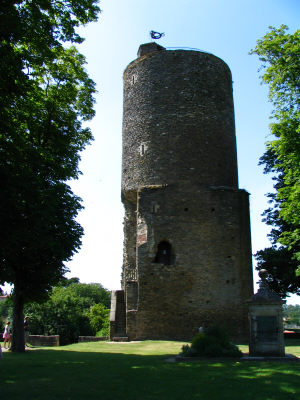"Like Merlin or the Lady of the Lake in the tales of King Arthur, Mélusine is a figure in the oldest stories of Vendée and Poitou. Mélusine is in fact a fairy who has a body half woman and half fish. A central part of these tales is Mélusine's marriage to a mortal named Raimondin de Lusignan who was unaware of his bride's true nature as fairy and mermaid of the nearby coasts and marshes. Although wishing to live her life ashore as an ordinary human, Mélusine was condemned to return at least one day of seven to her maritime body. This she did on Saturday, asking her husband never to seek audience with her on this day, which she always spent alone in her tower. Over the years she and Raimondin had many children, each having some exceptional physical trait. Long patient, Mélusine's husband eventually became jealous of her Sabbath's alone in her tower. Suspecting some treason or infidelity, he finally burst in upon her and discovered her in her bath -- and in a body resembling at once that of a woman, a fish, and a serpent. Mélusine, broken-hearted and ashamed, flew out of her bath and leapt from the window of her tower. Her body was for a moment suspended between her two opposing natures. Then her entire being dissipated into the airs and the waters around and beneath the towers. Today in Vendée, when the air is just right, you can see the scales of Mélusine in the light of the rippling waters, and you can hear her gentle wail in the breeze that filters through the trees. Some say the sparkling sands of these shores also are aglow from the scales of Mélusine. Readers of Rabelais will also recognize her and Raimondin de Lusignan as the ancestors of the Renaissance Giant, Gargantua."
